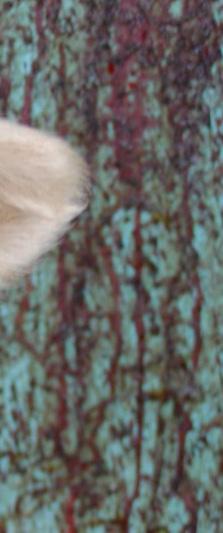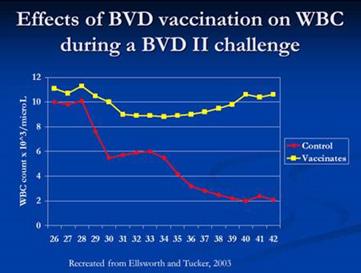
3 minute read
Understanding Bovine Viral Diarrhea

By: Dr. Dan Thomson, Production Animal Consultation
Bovine Viral Diarrhea Virus
(BVD) is a pestivirus that causes abortion in cows, birth defects in calves and immune suppression in all types of cattle. This virus is closely related to viruses that cause hog cholera in swine and border disease in sheep. BVD is a reproductive disease that is passed numerous ways (mainly nose to nose contact) in beef herds. There are two genotypes of BVD virus: BVD I and BVD II. Within each genotype, there are two biotypes: cytopathic and noncytopathic. “Cyto” means cell and “pathic” means death.
Therefore, cytopathic BVD kills the cells that it infects and noncytopathic is not lethal to the animal’s cells. Regardless of the genotype or biotype, BVD virus causes some major issues in the health and well-being of our cow herd.
There are two types of infections in which cattle can succumb to BVD virus. Transient infections (TI) are infections that a calf or cow gets which they fight off, recover and rid the virus from their body. Persistent infections (PI) are infections in which the animal never rids the body of the virus and constantly sheds the organism in the environment. The TI cattle shed BVD virus in the environment but only for about 14 to 21 days until they clear the viral infection.
How do cattle become TI or PI animals? Cattle that are transiently infected do so through nose to nose contact or contact with body secretions from a BVD infected animal. A PI calf however, must be infected as a fetus in utero prior to the fetal immune system being activated which occurs around 120 days gestation. The fetal immune system takes an inventory of cells and proteins when it is activated for the first time. If a fetal calf has BVD virus in its body at the time the immune system takes inventory, the immune system thinks that BVD virus is actually a part of the calf’s body similar to heart cells, hair follicles, etc. Therefore, the calf never forms an immune reaction against BVD virus because it recognizes BVD as self. A persistently infected calf will have BVD virus in every cell in its body for the entirety of its life.
How common is BVD virus in the United States? It is estimated that 1% of calves born in the United States are persistently infected with BVD. On the ranch, research has shown that about half of BVD PI calves die prior to weaning. Therefore, the prevalence of BVD PI calves at arrival to the feedyard ranges from 0.3 to 0.5% based on published literature. Maybe more importantly, one out of four pens of calves contains a BVD PI calf in our commercial feedlots. It is estimated that 50% of the BVD PI calves will die or be railed during the cattle finishing phase. So, only 25% of BVD PI calves survive to reach the packing plant. Along the way, these PI calves cause many herd health problems in all segments of the beef industry including immunosuppression of calves reducing their ability to recover from BRD, abortions in cows, pinkeye in calves secondary to immunosuppression and much more. Control of BVD virus in our beef production system is dependent on the cow-calf segment of the industry using proper vaccination programs and biosecurity to prevent birth of BVD PI calves.

Receiving calves in the fall presents many challenges as a beef producer. Some large issues can be magnified if BVD PI calves are in these groups. It is well documented that BVD virus can cause severe immunosuppression in cattle. Cattle exposed to Type II BVD in a controlled setting have diminished white blood cell counts leaving them very vulnerable to BRD infections (figure 1). Recently, we have been called to consult BRD cases due to higher than expected death loss. In one case, there were Type I and Type II BVD PI calves in a group that led to over a 60% death loss of nearly 200 head of cattle. blood samples of the cattle in the pen and conduct serology which will expose elevated BVD titers if BVD PI animals were the culprit.
Veterinarians have differing opinions on how to control BVD PI calves in the feedlot setting. The first line of defense is the vaccination of all cattle with a modified live BVD Type I and BVD Type II vaccine at arrival to help non-BVD PI calves develop immunity against exposure to the virus. Veterinarians debate on testing on arrival for BVD PI calves (figures 2,3).
Figure 3: It is not possible to determine which cattle are BVD PI visually; testing must be used. Below are two pictures of BVD PI calves.
Bovine viral diarrhea virus is a complex problem that can have crippling economical and biological effects on our beef herds in the United States. Many countries have developed eradication programs for this virus. Working with your veterinarian to develop a herd control program through baseline diagnostics, proper vaccine program design and biosecurity steps is key to controlling this disease in your herd.










